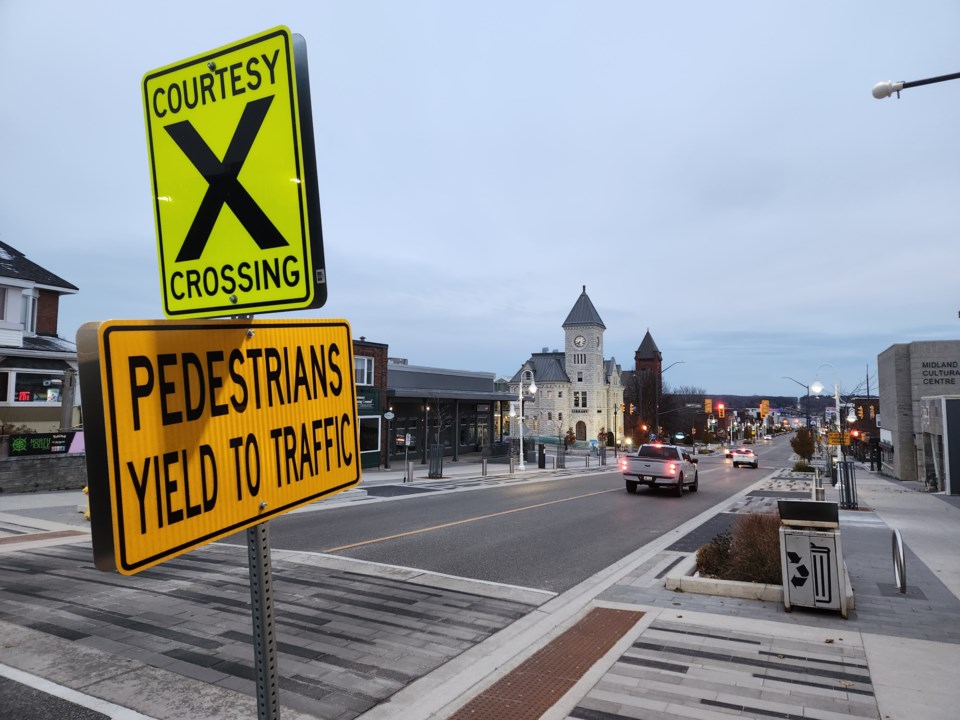A Midland resident is upset by the town’s installation of courtesy crosswalks on King Street.
“I’m very disappointed with Midland’s implementation of pedestrian crosswalks,” Nik Finney said. “This is contrary to the Ontario MOT requirements.”
According to Finney, Midland fails to meet the provincial standards and this creates confusion.
“Frequently, when I am yielding to traffic, the traffic will actually stop and wait for me in one direction, but not the other," he said. “My strategy now is to stand back until there is no traffic in either direction, then scurry across. A pretty pathetic state of affairs.”
But Mayor Bill Gordon said any uncontrolled crossing, whether marked as a courtesy crosswalk or unmarked (ie. jaywalking) has no requirement for vehicles to yield to pedestrians, beyond the desire to not be involved in a collision with a pedestrian.
“The onus is entirely on the pedestrian to only proceed when they feel it is safe to do so,” Gordon said, noting controlled crossings, such as at signalized intersections and crosswalks, put the onus on vehicle operators to yield to pedestrians by stopping.
“Even then, I would strongly suggest that pedestrians don’t rely solely on some paint and flashing lights, and to carefully cross when they feel drivers have stopped or clearly see them,” Gordon said. “In today’s world of a plethora of driver distractions, it is more dangerous than in the past, to rely solely on a walk signal or green light.”
Gordon said Finney’s communications to many levels of government and the MTO, to which he noted he’s been copied and responded “many times,” fails to acknowledge that uncontrolled crossings are legal and don’t require vehicles to yield to pedestrians and are clearly marked and signed accordingly.
“I am not a fan of these for that reason, but they remain a legal and widely used option, far less expensive than fully signalized crossings and carrying the same onus on the pedestrian for their safety as they would have using any other unsignalized crossing,” Gordon said.
According to Gordon, examples of “courtesy crossings” include the mid block crossings on King St. Under provincial regulations, Gordon said uncontrolled crossings are required to have signage that states “Pedestrians Yield to Traffic” at all crossings.
“There are also a few other differences between these and a signalized crossing,” Gordon said, noting that within Ontario Traffic Manuals, there are strict guidelines on where these types of crossings can be installed, meaning a downtown environment like King St. is acceptable.
“We added the ‘courtesy crosswalk” signage to help try and identify to pedestrians and drivers that this is in fact a courtesy and other municipalities have done the same to highlight this.
“When a pedestrian crossing is signalized, it is a requirement for vehicles to stop at all crossings when activated or pedestrians are present. It would not be recommended on King Street to install signalized mid-block crossings due to the distance to the signalized intersections. There is a minimum required distance between signals and we wouldn’t meet those requirements in most locations.”



